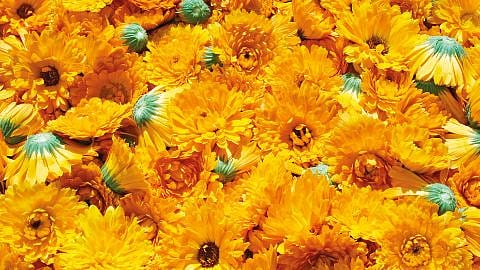Botanical Profile: Aloe Vera
Aloe vera (Aloe Barbadensis) has a long history as a skincare product. Even in ancient Egypt, aloe vera was already regarded as a plant that imparts beauty and health – Cleopatra is said to have used it every day.
Growth Habit
Aloe vera, which belongs to the lily family, resembles a cactus in its growth habit. The tropical plant is stemless or forms a very short stem with a maximum height of 25 cm. About 20 leaves grow upright to form a dense rosette. The roots are relatively shallow and grow horizontally underground.
Leaves
Growing 40 to 50 cm long, the lanceolate leaves of this succulent are thick and fleshy, with a waxy coating on the outside. They allow the plant to store moisture and consist of about 95% water. A single leaf can weigh up to two kilograms. The leaf is slightly rosy around the edges, which are serrated with small teeth at intervals of one to two centimetres.
Blossoms
The aloe's inflorescence reaches about 60 to 90 cm high and has one or two branches. The flower clusters have dense yellow and red blooms about 3 cm long, which become narrower towards the tip.
Habitat
Aloe vera's precise origin is unknown, although it is thought to have first appeared in the Sudan and the Arabian Peninsula. Today, the species is cultivated and grows wild in North Africa, the Middle East, Asia, the southern Mediterranean region, the island of Madeira, Cape Verde, the Canary Islands and Central and South America.
Characteristics
The gel from the water-retaining tissue of the leaves is a colourless to slightly yellow, clear to slightly slimy liquid. Aloe juice, which is pressed from the gel in the leaves, is used for medical and cosmetic purposes. The polysaccharides it contains are able to bind moisture and release it into the skin. Aloe Vera gel has a soothing, toning and cooling effect on the skin. It is recommended for impure, irritated, dry and sensitive skin.










